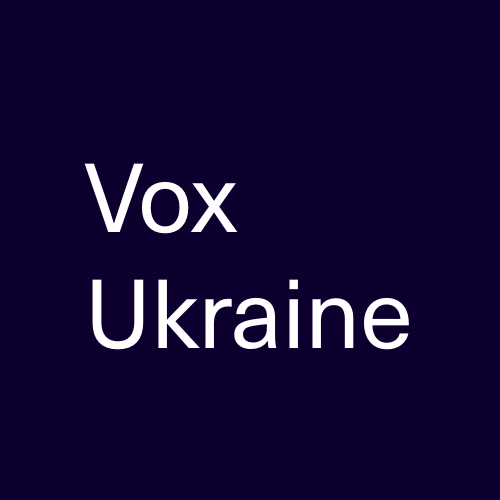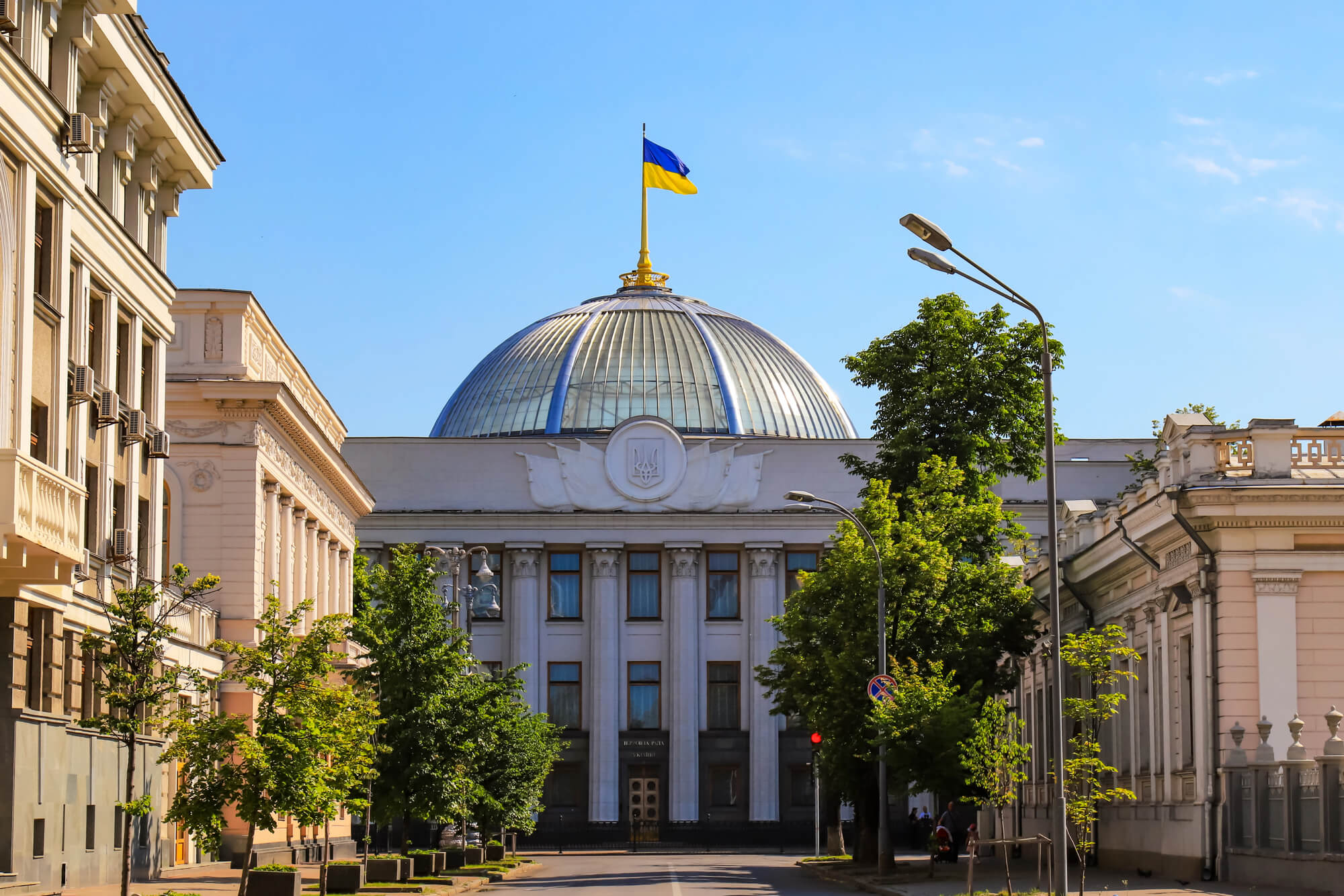Human activity always affects the environment in one or another way. Environmental policy is about finding a balance between people’s need for goods and services that ensure a comfortable life and the state of the environment — air and water quality, soil fertility, a mild climate, biodiversity, and other so-called “nature services.” For example, we want our homes to be warm, but we also want to breathe clean air, despite power plant operations.
The concept of “natural services” is absent from Ukrainian legislation, and environmental impact is often understood only in terms of compliance with or violation of state regulations on industrial pollution.
Overall, we cannot say that Ukraine has paid much attention to environmental protection. Sometimes, environmental concerns were used just to cover up corruption schemes (e.g., “Ukrecoresursy” — see Chapter 6) while the state of the environment continued to deteriorate. Although greenhouse gas emissions in Ukraine in 2019 were only 42% of the 1991 level, this reduction was primarily due to the sharp decline in industrial production rather than the adoption of technologies that reduce environmental impact.
As in other areas, most environmental reforms in Ukraine were introduced to comply with the EU Association Agreement. Implementing the European Green Deal will be one of the biggest challenges of Ukraine’s EU integration. However, today, the greatest threats to Ukraine’s environment come from the aggressor country.
Figure 8.1. Reforms in the environmental protection in 2015-2024, Reform Index data
Note: The cumulative score is the sum of event scores, which are derived from surveys conducted with Reform Index experts
Reforms in 2014-2019
In 2015, the government eliminated a corruption scheme (1, 2) involving the control of isolated ballast in ports. Isolated ballast is water that ships take in from a sea or river into special tanks to improve stability. According to international conventions, this water can be freely replaced at sea within the 12-mile zone. However, before the relevant government resolutions were adopted, Ukrainian state authorities could conduct chemical inspections of this water and fine ships for alleged “violations of standards.”
In 2016-2017, the government adopted several EU-related documents in the field of environmental protection. First, it ensured that lubricants and oils were indeed processed and recycled, rather than disposed of. Only companies that have the necessary equipment were allowed to recycle these substances, and importers of lubricants and oils were required to recycle them either independently or through authorized companies. Second, it approved a new technical regulation limiting the use of certain substances (lead, mercury, cadmium, and several organic substances) in electrical equipment, in line with Directive 2011/65/EU.
Third, the government adopted the Law “On Environmental Impact Assessment.” This law requires enterprises that affect nature, such as oil and gas refineries, thermal and nuclear power plants, chemical plants, and the construction of airports, airfields, highways, and hydraulic structures in sea and river ports, to conduct environmental impact assessments, hold public hearings on these assessments, and obtain resolutions from the Ministry of Ecology with recommendations on reducing environmental impact (if the Ministry doesn’t issue a resolution, the project cannot proceed).
The government introduced risk-based control in hazardous waste management. It also simplified the process of obtaining permits for special water use, which includes taking water from rivers or lakes for industrial needs and discharging polluted water back into them.
In 2018, Parliament increased fines for illegal logging (tripling them to UAH 510 for individuals and raising them tenfold to UAH 2,550 for officials) and introduced prison sentences of 3 to 10 years for timber smuggling. However, due to a lack of control over the movement of wood, these measures failed to stop either illegal logging or smuggling.
Reforms in 2019-2024
Forest protection
One of the first environmental decisions of the new Parliament was the adoption of a law regulating amber extraction in December 2019. Illegal amber mining was turning Ukraine’s Polissia region into a barren landscape. The new law introduced criminal liability for unlawful amber mining while also allowing auctioning of permits for legal extraction. The land rent for amber mining was reduced from 25% to 15%, with 30% of the rent revenue allocated to communities of respective regions. From then until 2024, 77 amber mining permits were sold in the Rivne region and 13 in the Zhytomyr region, with legally extracted amber volumes increasing significantly, from less than one ton in 2019 to nearly 24 tons in 2023.
In the fall of 2019, Parliament imposed a moratorium on clear-cutting of forests in the Carpathians. However, experts from the Reform Index doubt that this law will be enforced, since previous similar laws were not. A system for monitoring the circulation of timber has still not been introduced. In October 2024, Parliament passed a law to address this issue, but due to poor communication and public backlash, the President did not sign it. The moratorium on timber exports also remains in place, although Ukraine has to lift it once this law is enacted (more details in Chapter 9).
In 2022, the government approved regulations for forest protection, setting rules for prevention of fires (as well as for fire tracking and reporting), illegal logging, and other harmful activities. This document also clearly defines the rights and responsibilities of forest rangers, which had previously been vague.
In April 2024, the Cabinet of Ministers established a procedure for logging forests for military needs at the request of military administrations. The same resolution states that starting in April 2027, clear-cutting for primary use (i.e., harvesting mature trees for industrial purposes) will be banned in the Carpathians. Instead, logging will be selective (i.e. only certain trees will be cut within a forest plot) to help preserve the forest ecosystem.
Air pollution control
At the end of 2019, in compliance with Ukraine’s obligations under the Montreal Protocol on substances that deplete the ozone layer, Parliament banned the production of ozone-depleting substances and fluorinated greenhouse gases in Ukraine. It also restricted the import of these substances to registered entities, which are required to work on reducing their emissions. That same year, Parliament approved a law laying the foundation for an emissions trading system for greenhouse gases (GHG). The law introduced monitoring rules for GHG emissions and penalties for violations of these rules. Establishing an emissions trading system is one of Ukraine’s commitments under European integration.
In 2022, the Verkhovna Rada revised the conditions for obtaining permits for emissions of air pollutants. To obtain a permit, businesses must comply with emission limits and technological process requirements for reducing emissions. They must also submit annual reports on compliance with the conditions outlined in their permit. Permits will be issued by the Ministry of Ecology and local state administrations based on environmental impact assessments, if those are available.
That same year, Ukraine allowed other countries to participate in environmental impact assessments if they can be affected by projects implemented in Ukraine, such as construction of highways, airports, ports, and railways. In the fall of 2022, Parliament passed a law to create a unified national online system for tracking emissions and spreading of pollutants. The system will feature an interactive online map displaying all polluting enterprises along with information on their emissions, thus facilitating citizen participation in environmental policy development. In 2023, Parliament shortened the duration of public discussions during ecological impact assessments and allowed them to be implemented online.
Also in 2022, Parliament introduced a unified register for strategic environmental assessments (this is an evaluation of environmental impact of government projects and programs). This open-access register will include project planning documents, environmental impact assessments, and the results of public discussions of environmental impact.
In 2023, Parliament established a new public environmental monitoring system, initially planned for implementation in 2015. A public environmental monitoring system had existed since 1993, but after regional branches of the Ministry of Ecology were transferred to local authorities, its funding was significantly cut. This led to a lack of comprehensive and impartial information on environmental conditions. The new system that provides open access to environmental data is currently being populated with information. The state environmental monitoring system covers quality of air, water, land and soil, forests, biological and landscape diversity, the geological conditions, waste management, and the impact of physical factors such as temperature, noise, vibration, ionizing and non-ionizing radiation. The digital system is integrated with the State Water Cadastre, simplifying the issuance of special water use permits and the development of river basin management plans.
In July 2024, Parliament introduced industrial pollution control. The law establishes the procedure for obtaining an integrated environmental permit from the Ministry of Ecology for specific equipment covering air emissions, special water use, and waste management. It aligns Ukrainian legislation with Directive 2010/75/EU on industrial pollution and is one of the requirements of the Ukraine Facility program. The directive mandates controlling and reducing industrial pollution using the best available technologies. It requires a comprehensive assessment of a company’s environmental impact and obtaining an integrated permit for discharges and emissions according to the “polluter pays” principle.
Within five years after the end of martial law, Ukrainian enterprises will be required, in line with the Directive 2010/75/EU, to install automated systems for monitoring emissions of air pollutants at pollution sources. Currently, this requirement applies only to new equipment, while older “Soviet-era” equipment remains exempt from control systems. The government has time to refine this regulation before the end of martial law.
Also under the Ukraine Facility Plan, Ukraine introduced a framework law on the principles of state climate policy. The law outlines Ukraine’s commitment to climate neutrality and compliance with its obligations as a member party of the Paris Agreement. Currently, Ukraine has pledged to reduce greenhouse gas emissions to 35% of the 1991 level by 2030, but this target will likely be tightened.
Waste reduction and waste management
Reducing waste and, ideally, implementing a circular economy should be a strategic goal for Ukraine as it proceeds to the EU. In recent years, Ukraine has adopted several waste management laws aligned with European principles.
Thus, in 2021, Parliament banned free plastic bags in retail trade and set minimum prices for them. Moreover, bags must be biodegradable.
In July 2022, the Verkhovna Rada passed a comprehensive waste management law. It regulates waste collection, transportation, and processing, introduces the European waste management hierarchy (prevention — preparation for recycling — recycling — other types of recovery — disposal), and enforces the “polluter pays” principle. The law establishes the organizational framework for waste management systems at various levels. Complementary regulations include the procedure for ending waste status (i.e. reclassifying waste, such as scrap metal, as raw materials) and the procedure for monitoring waste processing facilities. Waste processing enterprises will receive operating permits only if they have a program to monitor their environmental impact. These monitoring programs must be submitted annually to the Ministry of Environment. Together, these regulations implement three EU directives.
Water protection
Two key reforms took place in water protection between 2019 and 2024. In 2023, a framework law “On Wastewater Management and Treatment” was adopted. It defines the duties of wastewater management enterprises, establishes wastewater treatment requirements and discharge standards, defines technical conditions for connecting to centralized sewage systems, and outlines the procedure for state control in this sector.
In 2024, the Ministry of Environment approved regulations for protecting groundwater. These rules cover the drilling, conservation, and decommissioning of wells, as well as the requirement that water users provide regular reports on the condition of their wells.
Chemical and technogenic safety
To prevent negative environmental impact of chemical products and align Ukrainian legislation with European standards, Parliament canceled the licensing of production of highly hazardous chemicals. Instead, it laid the ground for a national chemical management system based on the European model and the implementation of key technical regulations from REACH (Registration, Evaluation, Authorisation and Restriction of Chemicals) and CLP (classification, labelling and packaging of substances and mixtures).
In 2023, the Verkhovna Rada amended the Civil Protection Code, clearly defining mechanisms for public oversight of industrial and technical safety, as well as obligations of businesses for fire safety protection. Later that year, Ukraine joined the Minamata Convention on Mercury, adopting internationally recognized mercury management rules. This is the start of efforts to address the issue of mercury waste at defunct enterprises where mercury is stored in unsafe conditions. Ukraine will be able to access funding from the Global Environment Facility as well as technical and expert support for these efforts.
The war has caused immense damage to Ukraine’s environment — forest fires, soil and water contamination with toxic substances, and the destruction of rare wildlife in nature reserves. However, one of the most serious issues is landmine contamination. As of July 2024, approximately 144,000 square kilometers were potentially mined. To address this, in June 2024, the Cabinet of Ministers approved a national demining strategy until 2033, along with its implementation plan for 2024-2026 (one of the benchmarks of the Ukraine Facility). Ukraine receives international assistance for demining, but in some cases, farmers take the risk of clearing land themselves.
What next?
According to the Ukraine Facility Plan, Ukraine must continue embedding European environmental standards into its legislation.
In particular, installation of automated pollution monitoring systems must be mandatory for all enterprises, not just new ones. Ukraine should also adopt a law on protection of the Emerald Network and introduce measures to mitigate environmental risks from industrial accidents.
Additionally, Ukraine must approve a Strategy and action plan for Implementing Circular Economy Principles, update the National Waste Management Plan, launch a long-awaited electronic timber accounting and wood product certification system to curb uncontrolled logging, and align its legislation with the European Green Deal.
Of course, environmental protection is not only the government’s responsibility. Every company and every citizen must make efforts to ensure that future generations enjoy nature “services” too.
Read the White Book of Reforms 2025 and previous White Books (2017, 2018, 2019) via this link.
Attention
The authors do not work for, consult to, own shares in or receive funding from any company or organization that would benefit from this article, and have no relevant affiliations



